#Buying Guide
Contact Lenses
If you are looking for optical solution that underscore comfort, freedom and ease, it's time to switch to Contact Lenses. This guide can help you to successfully know, wear and care your Contact Lenses.
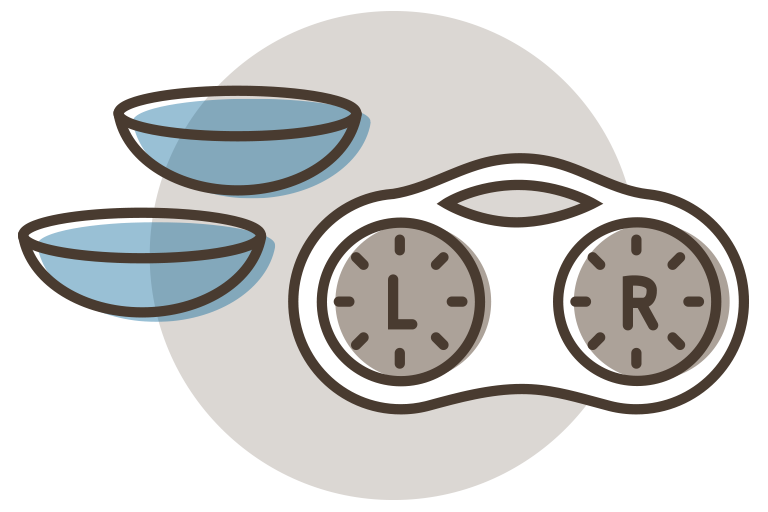
Contact Lens Power Type
Contact Lenses help correct most vision problems like Myopia, Hypermetropia, astigmatism and Presbyopia. The lenses can be bought according to your power requirements.
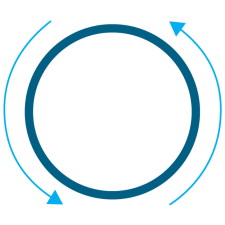
Spherical Contact Lenses
Spherical contact lenses have the same lens power throughout the entire optical part of the lens to correct myopia (nearsightedness) or hypermetropia (farsightedness).

Toric Contact Lenses
Toric contact lenses have different powers in different meridians of the lens to correct astigmatism as well as nearsightedness or farsightedness.

Multifocal Contact Lenses
Multifocal contact lenses contain different power zones for near and far vision to correct presbyopia as well as nearsightedness or farsightedness. Some multifocal lenses also can correct astigmatism.
Contact Lens power varies depending upon the distance of the spectacle lens to the apex of cornea. Here’s a handy tool! Use our Spectacle to Contact lens Conversion Table to convert your prescription for glasses to the corresponding contact lens parameters.
Contact Lens Material
Soft contact lenses have come a long way in terms of technology and material. The material can make a big difference in their vision, comfort, and eye health. Nowadays, they are either made of hydrogel or silicone hydrogel.
HYDROGEL LENSES
Hydrogel lenses are made from gel-like, water-containing plastics called hydrogels. These lenses are very thin and pliable and conform to the surface of the eye. They have a naturally high water content that allows oxygen to pass through the lens, keeping the eyes white and healthy. This feature makes them ideal for dry and delicate eyes.
SILICONE HYDROGEL LENSES
Silicone hydrogel lenses are an advanced type of soft contacts that are more porous than regular hydrogel lenses and allow even more oxygen to reach the cornea. Introduced in 2002, it’s a combination of hydrogel and silicone in which is possible for the manufacturer to increase the oxygen permeability, even with a low volume of water. Modern silicone hydrogel lenses offer the advantage of a higher oxygen transmissibility, which reduces the risk of eye hypoxia. This feature makes them a great choice for extended wear.
Contact Lens Disposability
Even with proper care, contact lenses should be replaced frequently to prevent the build-up of lens deposits and contamination that increase the risk of eye infections.
DAILY DISPOSABLE LENSES
Discard after a single day of wear.
BI - WEEKLY DISPOSABLE LENSES
Discard every two weeks, or sooner.
MONTHLY DISPOSABLE LENSES
Discard every month.
YEARLY (CONVENTIONAL) LENSES
Discard every year.
Contact Lens Insert, Remove & Maintain
Wearing contact lenses isn’t the same as wearing glasses. While you’ll love the newfound freedom they offer, contact lenses require a little more extra care to help keep your eyes healthy and happy. We will help you understand how to use contact lens and take care of them.
How to insert Contact Lens ?

WASH YOUR HANDS
Wash your hands with soap (preferably non-perfumed, anti-bacterial liquid soap), then rinse and dry your hands with a lint-free towel. Remember to cut your nails short to avoid any damage to your eyes or lenses.

CHECK YOUR LENSES
To do this, just put the lens on the tip of your finger and hold it up to the light. If the edges flare out, it’s inside out. It should look like a bowl with straight edges. Check the lenses for any damage. Ensure the lens is free from dirt and debris.

HOLD YOUR EYELIDS
Gently Pull down lower lid of right eye with middle/ring finger of same hand. Open upper lid with other freehand so you don’t blink or get your eyelashes in the way.

PLACEMENT OF LENS
Move the contact lens toward your eye steadily. Look upward as you place it on your eye, and slowly release your eyelid and close your eye for a moment to allow the lens to settle. Repeat for your other eye.
How to remove Contact Lens ?

WASH YOUR HANDS
Ensure your hands are clean and dry. Look up and carefully pull down your lower eyelid with your middle finger.

SLIDE THE LENS
Bring your index finger to your eye slowly until you touch the lower edge of the lens, and slide the lens down to the lower white part of your eye.
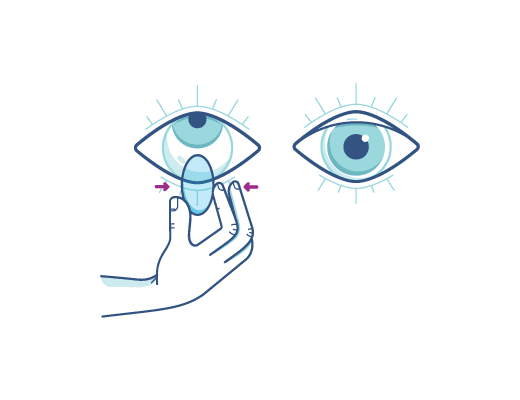
SQUEEZE AND REMOVE
Gently squeeze the lens between your thumb and index finger and remove it. Repeat for your other lens. Do not wear these lenses overnight.
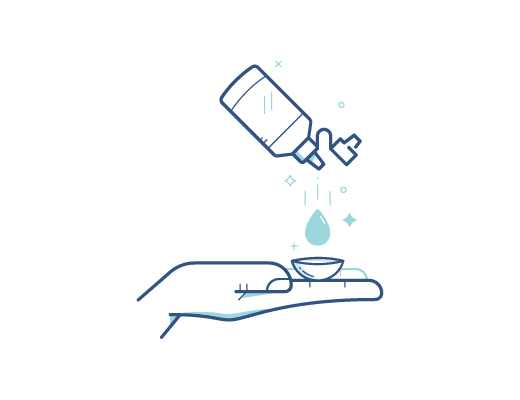
CLEAN, SOAK OR DISCARD
If you wear daily disposable lens you can toss them out, but make sure you clean and disinfect re-usable contact lenses and store them with an approved contact lens solution.
IMPORTANT: Remember to always follow the replacement schedule and care instructions recommended by your eye care professional.
Contact Lens Maintainance

HANDS CLEANLINESS
Ensure your hands are clean. Also, please do not apply any kind of cream or moisturizer before handling contact lenses. Never allow soaps, cosmetics, or other substances to come in contact with your lenses.
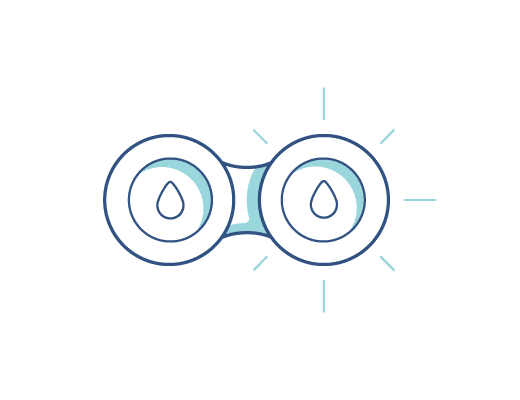
CLEAN LENS CASE
Always clean and rinse the case with contact lens solution before placing the lenses back in the storage case. Replace the case when you change a new bottle of cleaning and disinfecting solution.
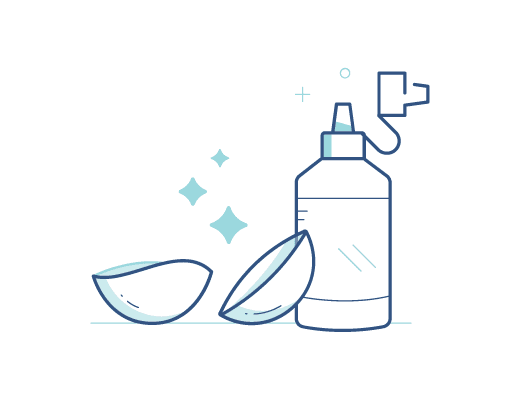
SOLUTION REFILLING
Never re-use lens care solution or top up the solution left in the lens case. Discard used or old solution and refill the lens case with fresh solution each time. Leave your lenses to soak overnight.

DON'T USE TAP WATER
Never rinse your contact lenses or lens case with tap water. Refer to your contact lens solution instruction guide for further information about how long to soak your contact lenses or how often you should change the solution if you don’t wear them every day.
NOTE :
- If you feel that your contact lens has dried out, the best thing to do is discard them and wear a fresh pair.
- Wear a pair of sunglass or eye-shield while driving any two wheeler to avoid any dust getting into the eyes.
- Never sleep in your contact lenses in order to avoid infection.
- Always contact your eye care professional if you experience any abnormal symptoms of eye inflammation or infection such as irritation, redness or discharge.
Live liberated with Contact Lenses.
Switch to Contact Lenses Today.

